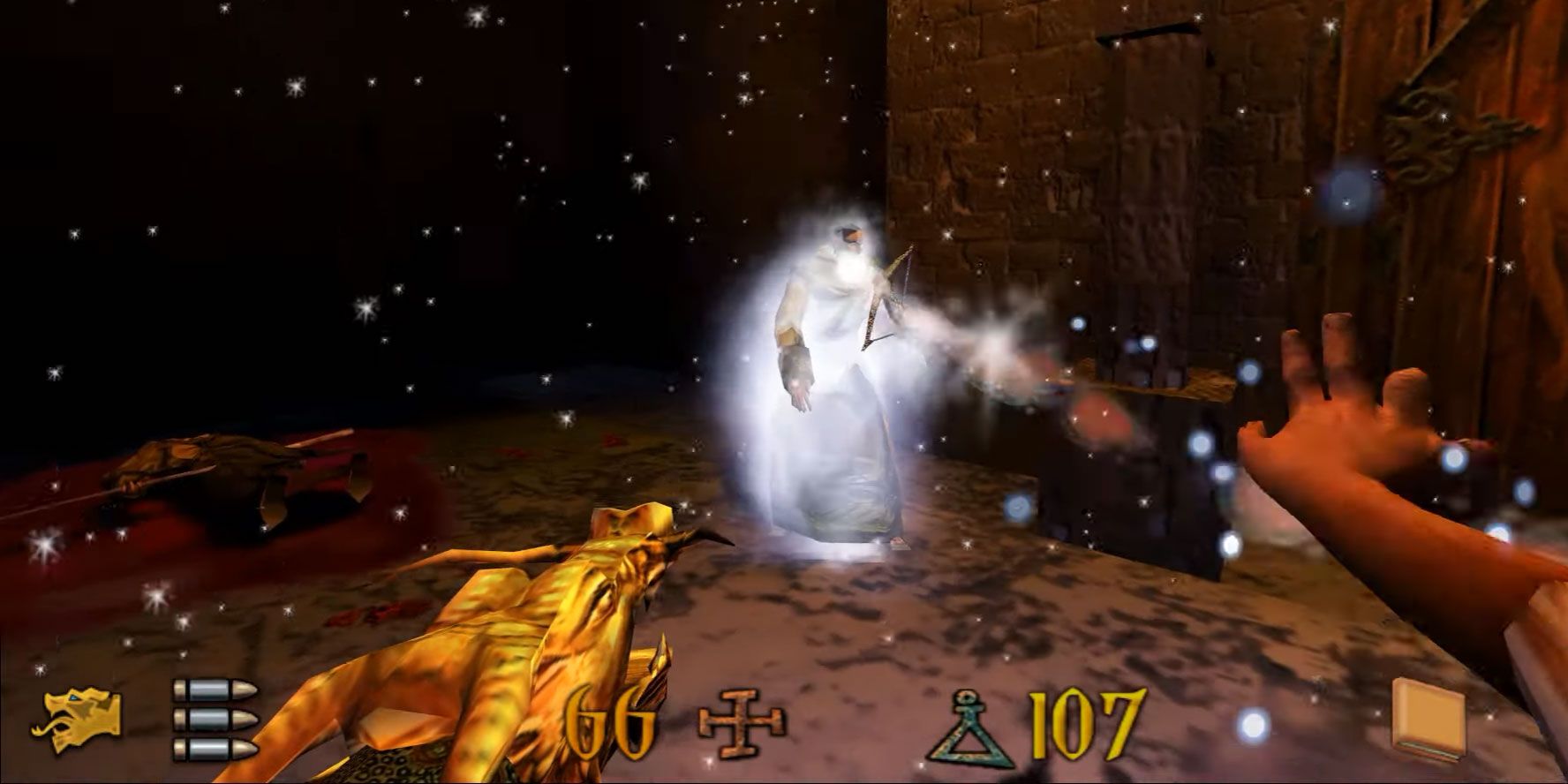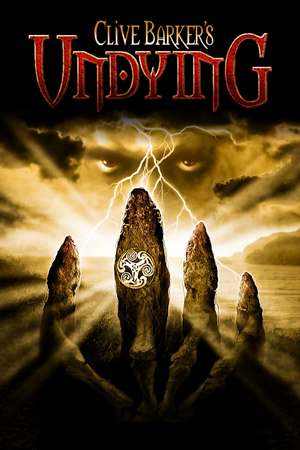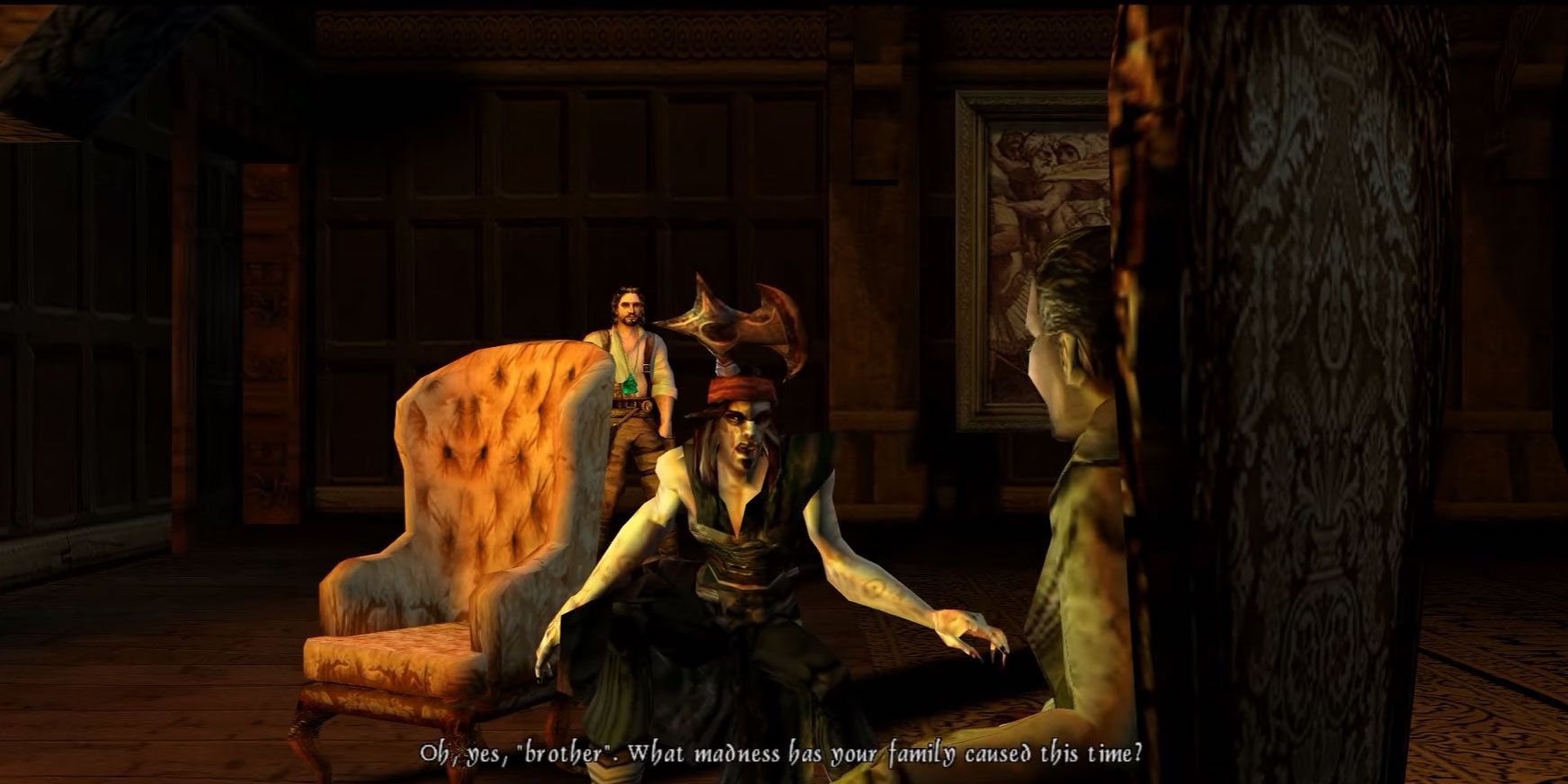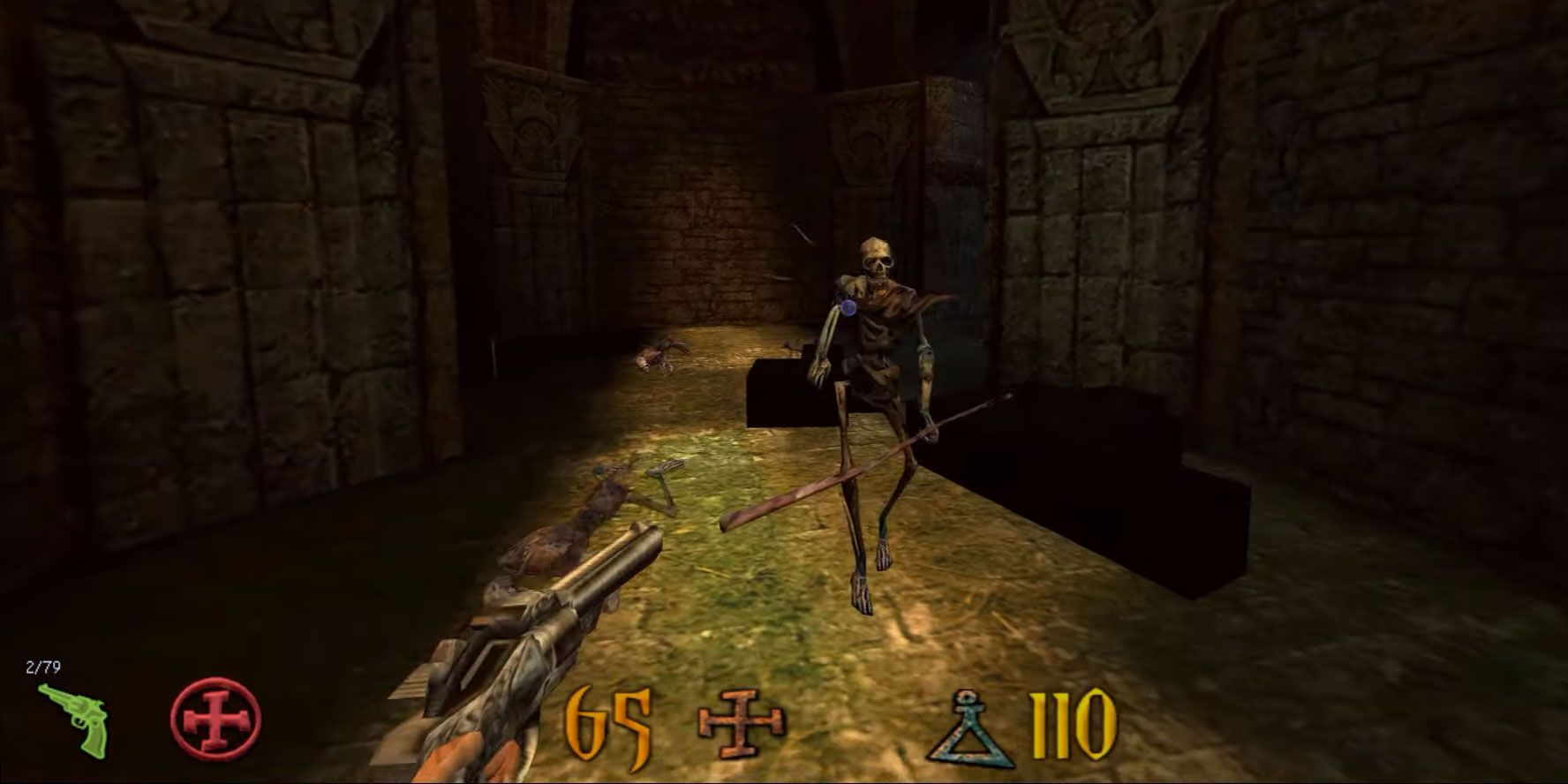Counting infamous horror movies like Hellraiser and Candyman among his great works, while his author credits include the legendary short story collection, Books of Blood, Clive Barker is a name that really needs no introduction. The videogame, Clive Barker’s Undying, on the other hand, probably does need a little introducing, given that it was blighted by poor sales and never achieved the success that its unique vision deserved. With its ornate haunted house setting and campy delivery of gothic spooks, it’s a perfect retro treat to check out this Halloween.
Developed by DreamWorks Interactive in 2001, Undying was a first-person shooter set in 1923 that cast you as Patrick Galloway, a World War I vet who goes to visit his friend at a spooky mansion that appears to have been beset by occult happenings. Curses, demons, and the violent restless spirits of a wealthy family blight the mansion, which you can explore in a semi-linear fashion, reading written notes and getting neat snippets of world-building in between fighting various horrors using a combo of firearms and magical abilities.
Barker-Shock
In its own way, Undying anticipated Bioshock a good seven years before it came out. Yes, the latter was famously a spiritual successor to System Shock, but in terms of combat mechanics and environmental storytelling, a lot of that Undying DNA can be found in Ken Levine’s masterpiece. It was rare for first-person shooters in 2001 to have much going on in the way of story, yet Undying was one that had a story written by none other than the master of horror himself.
That writing calibre really shines through too, from the narrated letters you find lying around, to the spooky story of the eccentric, utterly mad family, Undying has that Barker stamp, laden as it is with romance, intrigue, bad families, betrayals, and portals into dark dimensions. It was an engaging, exciting slice of Gothic storytelling in videogame form, which was a rarity at that point in the medium’s history.
Undying wasn’t initially Barker’s creation, and he was in fact brought on by Stephen Spielberg (who helped found DreamWorks Interactive) after the original development had problems piecing together a compelling story. In an interview back in 2001, Barker said he wasn’t impressed with the game’s original protagonist—a tattooed superpowered meathead called Count Magnus Wolfram—and one of the first things he did was shift the character over to someone more appealing. In typically colourful words, here’s how Barker put it:
“Why would you want to play [as him]?” And so we threw him out, and I said, “Look. You’ve got a gay man in charge here. Bring me somebody I want to sleep with. Bring me somebody fabulously sexy.”
That’s how the game’s (sexable, apparently) hero Patrick Galloway was born, and Barker remained involved with the game’s narrative throughout its 18-month development, ensuring the characters remained relatable despite their obvious eccentricities. Barker also sometimes reeled in some of the more ‘gamey’ concepts the devs had for Undying, such as when he insisted that they remove a particular skyscraper-sized monster. This is how he justified the call:
“if a monster gets that big there’s nothing to be scared of. What’s it going to do, shit on you, sit on you? It was hard to know where the threat comes from. I wanted to humanize the game on every level.”
But while DreamWorks Interactive needed that Barker touch with the story, they did a great job designing the game itself. While the story was fundamentally linear, there were myriad grand rooms to explore in the forlorn manor, where your magical powers could reveal dark secrets, flashback to grisly murder scenes, or cause faces in paintings to distort into their true form. Through tasteful textures and an atmospheric soundscape (the latter of which helped convince Barker to work on the game), with spooky music complimented by the sounds of wind and thunder outside, the Covenant Estate was a fascinating, immersive space to explore.
And to say that Undying anticipated Bioshock’s combat would actually be doing it a bit of a disservice, because while in the original Bioshock you could only wield one plasmid or weapon at once, in Undying you had a weapon on your left hand and powers in your right, making it something of a pioneer for creative dual-wielding in first-person shooters.
A Magic Touch
The weapons arsenal was quite limited—you had your revolver, a shotgun, and a rather bonkers-looking ‘Tibetan War Cannon’ that could slow down enemies with balls of ice—but the spells list was impressive. You could resurrect fallen enemies using Invoke, Flight let you basically ‘no-clip’ around the place and travel through the air, and Skull Storm did more or less as it said on the tin, letting you fire off flaming skulls like some fantasy of an 80s heavy metal band. Sure, some spells were more useful than others, but learning how to synergise them with the weapons in your left hand (summoning a shield and using it to close the distance so you could point-blank blast enemies with a shotgun, for example), was a big part of the fun.
Who knows? Maybe Undying was a little too original in the end, and we as gamers weren’t quite ready for its mechanical originality and classy brand of Gothic horror delivered by none other than Clive Barker himself, but you can still grab it on GOG.com today, and until as recently as three years ago a modder’s been patching the game to run widescreen at high resolutions, along with delivering load time improvements and Vulkan renderer support.
If you’re after an arcane and retro jaunt around a classically creepy old manor this Spookmas, then I thoroughly recommend heading out to the Covenant Estate.

Clive Barker’s Undying
- Platform(s)
- PC
- Released
- February 21, 2001
- Publisher(s)
- EA
- Genre(s)
- First-Person Shooter, Horror

